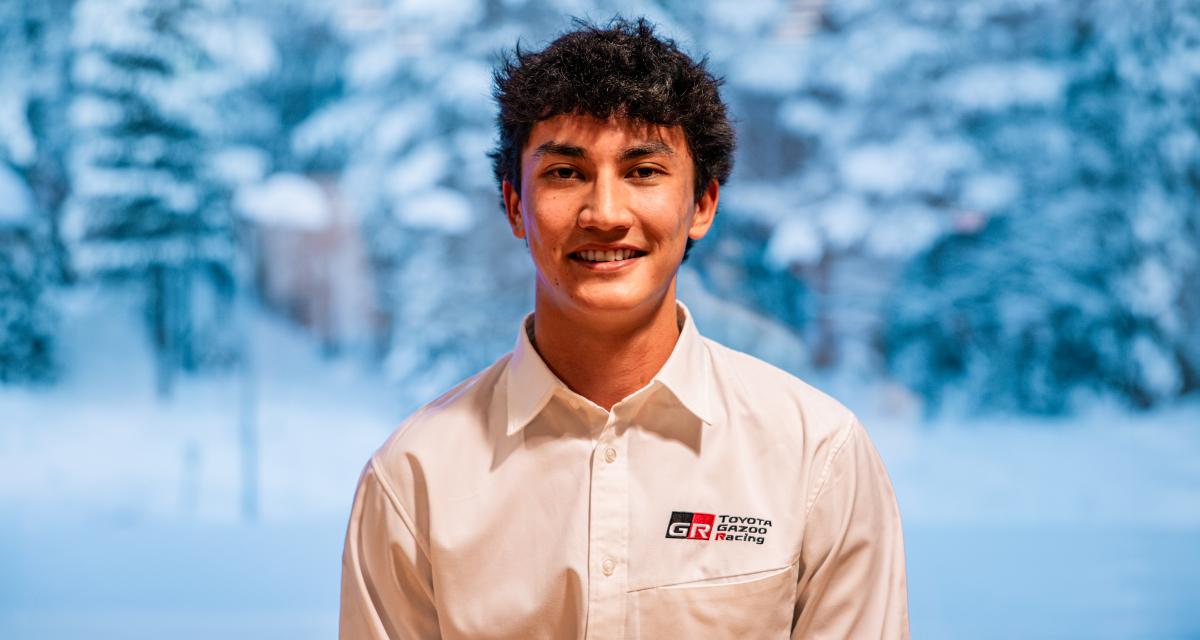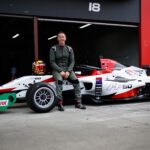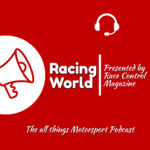
Kiwi Rally Legends: John Woolf and Grant Whittaker
Story by Danny James
In this edition of Kiwi Rally Legend’s we wanted to celebrate the lives of two of the most well liked, respected, and massively talented Kiwi lads NZ rallying has ever produced. They were on their way to becoming rally superstars in the early 1980’s when the cruel hand of fate intervened in the 1982 Chisum Trail Rally in the USA.
For the older readers the name Woolf will be well known. John’s father Allan is a motorsport legend in his own right. The 1975 NZ Saloon car champion, he and his family are Kiwi motorsport royalty. In fact, up until recently Allan was still driving at one of his favourite events, Rod Millen’s Leadfoot Festival. He and wife Colleen still attend, and are great supporters of the event.
Back in 1973 the Woolf’s decided to give rallying a try. Not just any rally mind you, this was the International Heatway Rally. A marathon seven day event, covering a large part of both the South and North Island, and driving through day and night. Young John was to be co-driver. A massive adventure no doubt for father and son in the trusty V6 Capri, which had also been used for circuit racing. The biggest modification for rallying being a stone guard across the front with the name “Woolf” on it.
That was John’s introduction to rallying, and so began a passion which would grow ever stronger in the following years.
The story of John and Grant goes back much further though. When compiling this feature I spoke with John’s younger sister Jane, who said to me “if you are going to write something about John, it needed to be about Grant Whittaker as well.” Jane also loaned me a scrapbook on John’s life, and after having a look through the wonderful old photos and articles, I could understand why. Grant Whittaker was not only John’s navigator, but his best mate.
Right from early childhood when the Woolf family moved to Green Bay, John and Grant hit it off. Apparently on the day of the move, after parking the truck, Allan looked around to find four year old John sitting on the roadside talking to another young boy. His name was Grant Whittaker. Early photos of the pair show them heading off to school together, and attending Boy Scouts.
When John started rally driving it was only natural to have Grant sitting alongside him as co-driver. And what a team they were to become. Without doubt John and Grant were one of the fastest teams in New Zealand rallying in the late 70’s, driving the famous black RX3 Coupe. But they were also keen to stretch their wings and attempt to further their career overseas.
That marathon 1973 Heatway had obviously had a major impact on John, and having done a reasonable amount of tarseal motorsport he decided he wanted to continue rallying, but in the driver’s seat. His first event was the Maramarua Rally, driving a Triumph Vitesse. Grant came along to navigate.
By the time the 1975 International came around, John and Grant had progressed to a fairly standard four-door Mazda RX3. As a late entry, they started car 90 on the road, and proceeded to set the rally alight, charging through the field to finish an outstanding sixth overall.
They repeated that performance again in the 1977 Radio New Zealand Rally, only this time the star-studded field included three Works Fiats, and a young Finn by the name of Ari Vatanen in a Masport Escort. Also worth noting is that these four “Works” drivers were all on pace notes, something the NZ crews were not familiar with. The first Kiwi home was NZ rally champ Rod Millen driving his Mazda RX3 into fifth place overall, followed by John and Grant.
The back story however is that towards the end of the event in the Tokoroa Forest, Rod had suffered a broken axle. Despite the opportunity to potentially take over the honours as first Kiwis home, John and Grant put that thought aside and stopped to assist Rod, towing the stricken Mazda out of the stage where the service crew were waiting – a true indication of great sportsmanship, and unlikely to happen these days.
John and Grant had also demonstrated their outright speed against international competition in that event, with two third fastest special stage times at Mystery Creek and Maramarua respectively.
For the 78 International John swapped marques and drove a 2.0lt OHC Pinto Escort, due to damaging the RX3 prior to the event. Once again consistency paid off and they were rewarded with fourth overall.
The boys had shown their potential on the local scene that year as well, winning the 1978 Tokoroa Rally, in the Nylex Vinyltop sponsored RX3, and John also won the 1978 Mystery Creek Rallycross Championship, which at the time attracted a number of our top rally drivers.
He was to repeat the Rallycross title in 1979, and in the NZ Rally Championship John and Grant were leading after two rounds. In fact the title looked like it was going to be theirs for the taking going into the final special stage of the fourth and final round. Unfortunately a diff problem was to force them out, and a national rally title slipped through their grasp..
There is a wonderful rare interview on Youtube with John discussing his rally ambitions back in 79, and the possibility of heading overseas to further his career. A quiet and humble guy in the interview, but obviously behind the scenes very focussed on what he and Grant were hoping to achieve.
That ambition was to become a reality in May 1980, when the boys, along with mechanic Paul Ludgate, took the gamble and headed for the US, taking with them their RH drive Mazda RX3 Coupe. Prior to leaving in the April, John won the 1980 Ashley Forest Rallysprint, followed up by a win a couple of weeks later in the Woodhill Forest Rally.
The saying “one good turn deserves another” was to ring true on the US adventure. Perhaps after helping Rod Millen back in the 77 International Rally, Rod was to become instrumental in their US move. By that stage he was well established in US rallying, and had encouraged John and Grant to make the move, including the use of his facilities in Santa Ana to prepare and maintain their car. In return John and Grant assisted Rod, and John maintained Rod’s engines. They were on a very tight budget however, and unable to earn money in the US meant they relied heavily on rally prize money to fund their passion.
Rod may have had second thoughts about inviting the boys over, as in their first event, the 1980 Golden West 2000 Rally, which was the first round of the NARRA US Rally Championship, the boys got off to an absolute flier, winning the event from Rod in his RX7. The lucrative prize money pocketed was a welcome boost to their rally budget!
As a side note John was asked in an interview “how many other Kiwis back home can drive like you?” In typical understated fashion John answered “a boatload!”
Excellent results were to continue in that first year in the US, culminating in third overall for the SCCA Rally Championship. One report noted “the New Zealand invasion was perhaps the most significant event of 1980, a trend started by Rod Millen, and followed by John Woolf. The lads were most welcome, for they are all excellent and highly competitive drivers, and pleasant and even-natured to a man.”
A faster more modern Mazda RX7 was then sourced for the following year. Mazda came to the party and provided a brand new road car, which was collected straight off the factory floor. The boys set about stripping and rebuilding the car ready for the 81 Championship.
Owen Evans and Reece Jones had joined the team in the US by that stage, and Owen’s skills were called upon to replicate the trick four link setup that he had previously installed in John’s RX3. Another friend, Mark Howard, designed the colour scheme and arranged painting of the car.
Some interesting notes from John’s 1981 diary on the RX7’s preparation. “The first job to do was to put the car into a jig so it could be rolled over giving easy access for seam welding the car for strengthening purposes.
Major modifications were to install four link suspension boxes in the rear to enable us to have fully adjustable rear suspension. Also the front suspension towers were lifted so that we could run a longer travelling front suspension strut. We had trouble purchasing these struts throughout the country, but were able to get them through a contact in New Zealand, and had them sent over to America through the New Zealand Airforce.
I wanted to run ventilated disc brakes both front and rear with four pot Lockheed calipers. To make this possible a lot of fabricating had to be done, a time consuming exercise, but in the long run proved to be extremely worthwhile as I am very pleased with the way my brakes have worked out.”
Unfortunately the poor RX3 had to be scrapped. Due to US Customs requirements, and a lack of funds to send the older Mazda home, the car had to be crushed. By all accounts the boys watched on in tears as the trusty RX3 headed into the crusher.
The RX7 proved to be another very good car, and despite some early setbacks the boys performed strongly.
Comments from John’s first rally in the RX7 stated he was pleased with the new Mazda’s performance, “the driver being the only problem adjusting to left hand drive – grabbing the window winder instead of the gear lever.”
The end result for the year was an excellent second overall in the SCCA Championship.
John also drove the RX7 at Pikes Peak, finishing second in the rally car class, and winning the Rookie Title.
At the end of 81 the boys were looking at what other drives were available. While the RX7 was proving to be competitive, Rod Millen was the main Mazda man in the US at that time, so opportunities were always going to be limited with that manufacturer.
A couple of options were looked at. One was a Vauxhall Chevette, and the other a Peugeot 504 Coupe. The Peugeot was ex John Buffum, who at that stage was moving on to the all-conquering Audi Quattro.
By all accounts Peugeot had been looking for someone to drive the 504, and spoke to an American by the name of John Woodner. Woodner was a rally competitor too, and hard case, but also a very wealthy business man. He was a great friend to John and Grant while they were in the US, and apparently said to Peugeot “don’t take too much notice of the way they look, they’ll do the job for you,” referring to the shorts and casual look of the two Kiwi boys.
The boys duly went with Peugeot, which, from the outside perhaps looked like an unusual move given the agile handling of the Mazda versus the heavy, and under-powered 504, which was more of an endurance rally car. In fact, it was an ex Works car that had competed in the East African Safari.
That wasn’t going to deter the boys however, and they set about lightening the car and making it as competitive as possible. As it turned out their first event was a DNF with a blown engine. A blessing in disguise perhaps, as Peugeot then provided three McLaren built V6 engines, which were far better.
Peugeot also had access to Michelin tyres, which were proper rally tyres compared to the BF Goodrich, who the majority of other drivers used at the time. To be fair BF Goodrich had been very helpful to several of the top competitors, sponsoring them through tyre supply, John and Grant included. The Michelin tyres were more of a specialist tyre, and by all accounts supply was never a problem.
There was another very significant reason for the boys to choose Peugeot. Remembering this was 1982, and Group B was taking over rallying, Peugeot at the time were secretly working on the 205 T16 which was to become a world beater later in 84 and throughout 85 and 86.
John and Grant were apparently aware of the 205 project, and what opportunities may have been available to them in the future.
In early 1982 John and Grant returned home briefly for John’s wedding to Carol Walker. The pair had been going out for many years, and in January tied the knot. A brief honeymoon in NZ was followed by a return trip to the US. John, Carol and Grant continued to flat together, but by now were based on the opposite coast, in Livonia Michigan, closer to the rally base, and Peugeot.
While rallying the ex Safari 504 the Woolf/Whittaker team were joined by Michael Lloyd and Gael Fergus, who had decided to head over and crew for them. At the same time the team were developing another 504 in their workshop. This one was going to be much better though. Lighter, sporting larger brakes, and a better engine again.
After five rallies the boys were sitting third in the SCCA Championship, and the lightweight modified new car was nearing completion. The next event was the 1982 Chisum Trail Rally in Oklahoma. The new car was still not quite ready, so the original car was used.
For the first time on this event John and Grant were to start number one on the road. The reasons around their seeding after 38 years are slightly unclear, as they were at that point third in the Championship. There were reports at the time that a ballot had taken place prior to the event and the boys had won the top seeding position. Another report suggested they were given it by another crew that had won the ballot. Whatever the reason, they started first on the road, followed by Rod in his RX7, and John Buffum in the Audi.
Apparently prior to Stage Five, the crews had been held up for some time on the start line due to communication issues. When they finally got clearance John and Grant were first away, followed by Rod.
Somehow between the zero car clearing the stage, and John and Grant starting, a marshall crew in a large 4WD vehicle got lost, and accidentally entered the live stage heading in the opposite direction to the rally cars. On a blind brow at high speed the two vehicles met…
The resulting accident was massive, and John and Grant’s lives ended together at the scene…












No Comments
Sorry, the comment form is closed at this time.